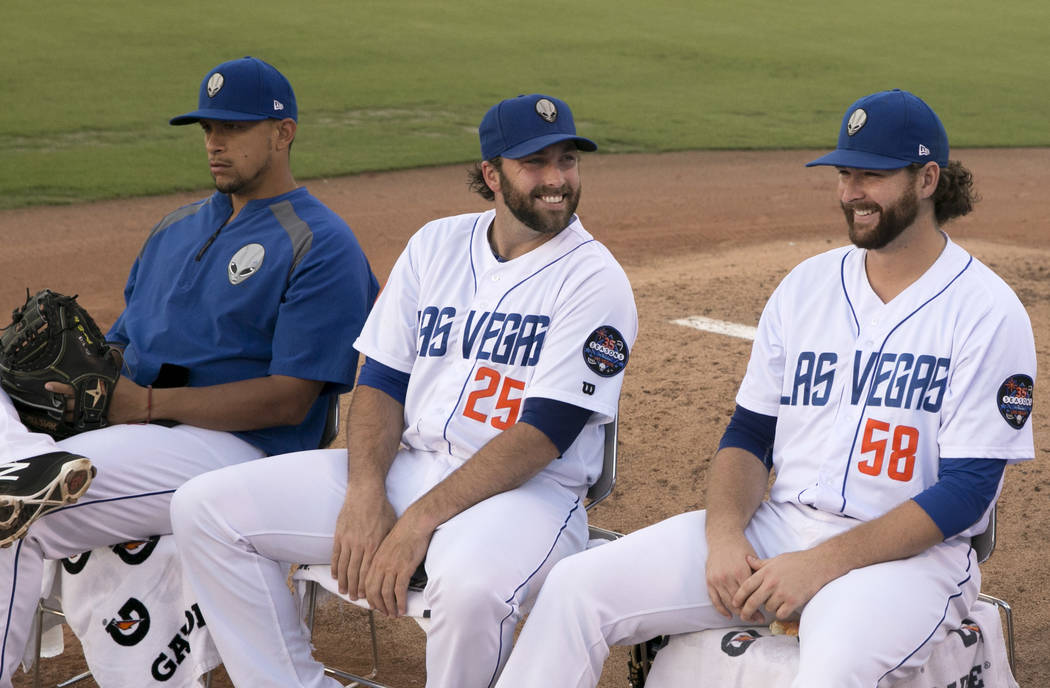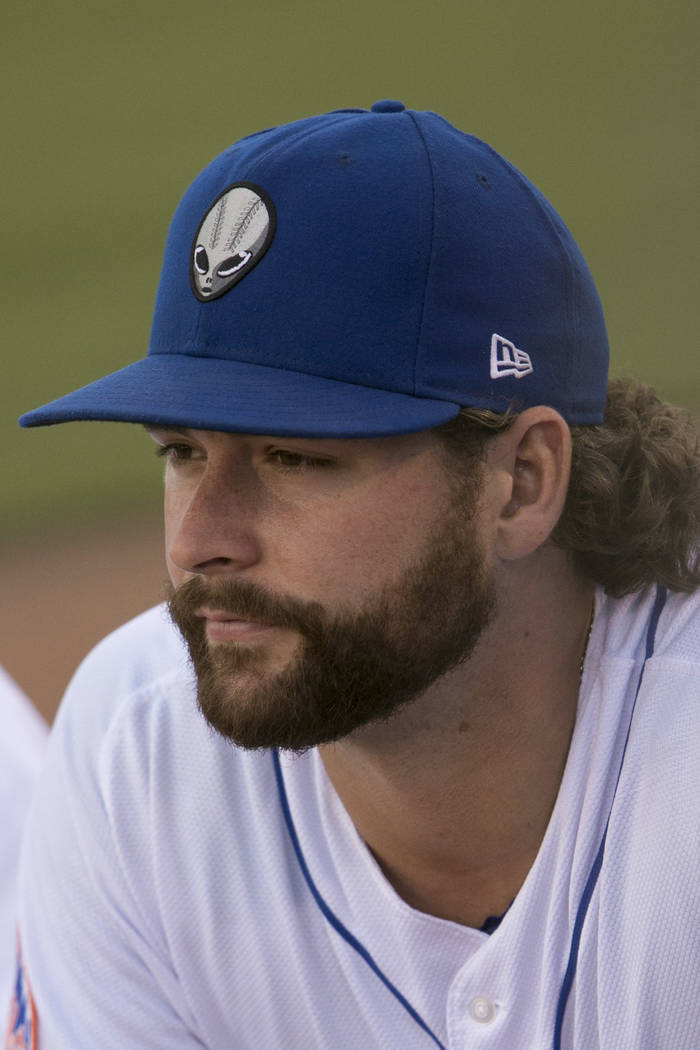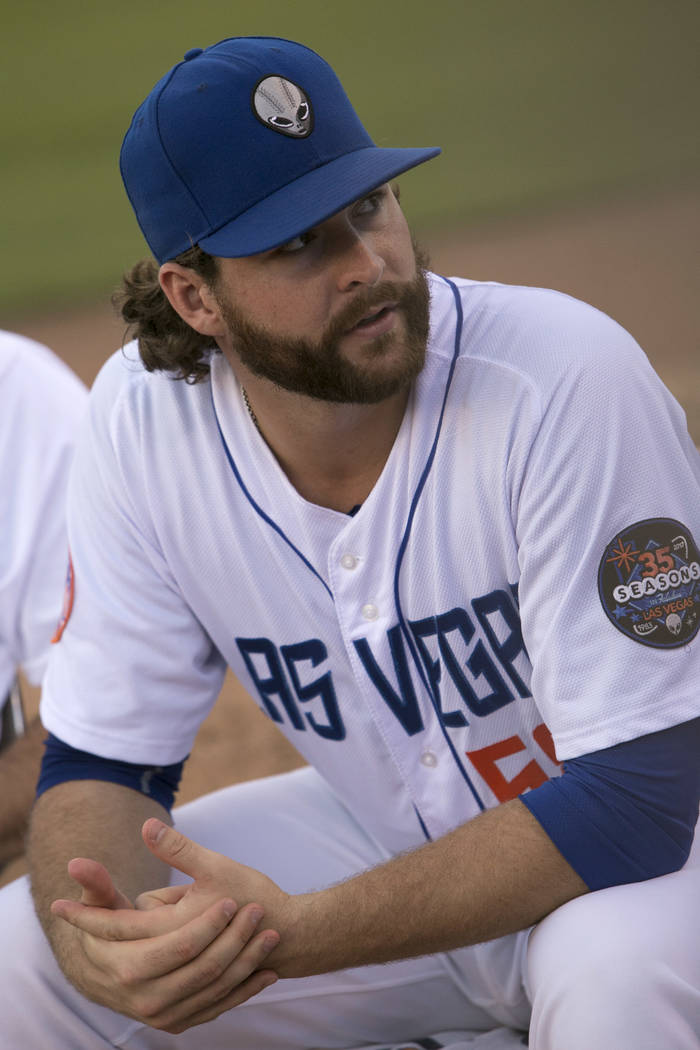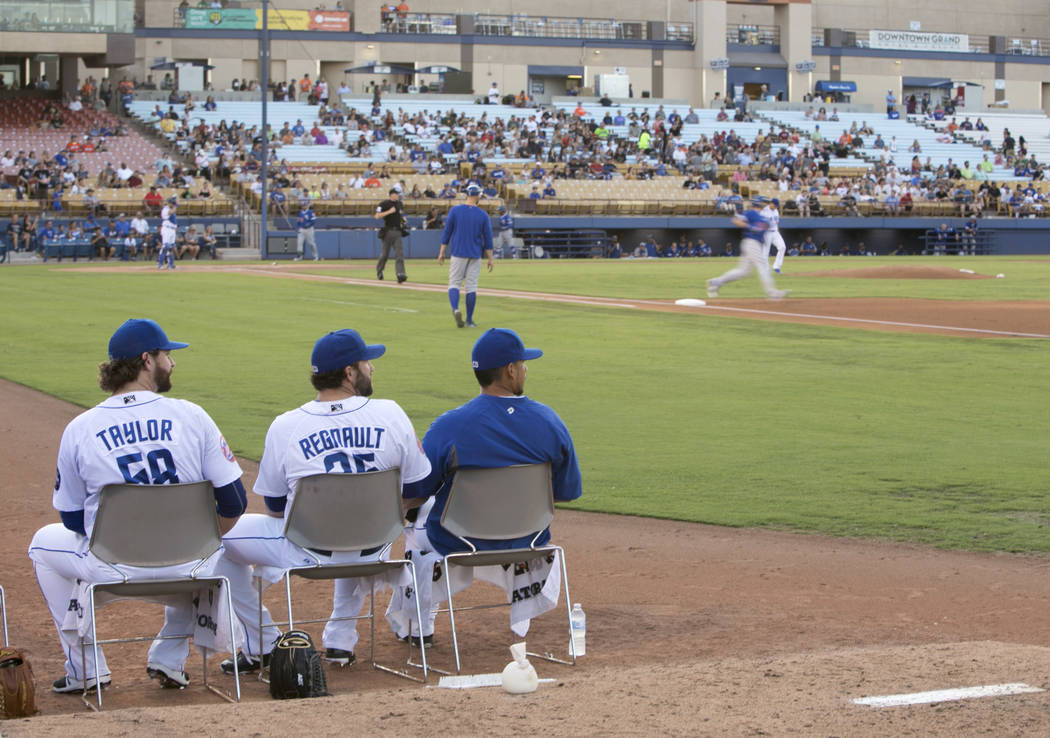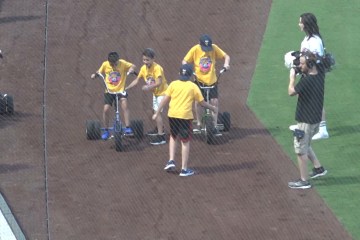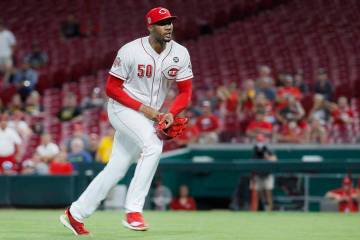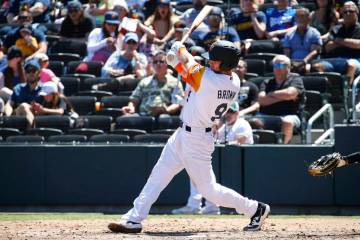A month after attack, Logan Taylor activated from disabled list
The headaches came and went with neither rhyme nor reason. They were mostly light. Sometimes they’d come for just a few minutes before disappearing.
This is an aftereffect of being hit across the back of the head with a tire iron in a midday attempted robbery. This is where life took a detour for 51s relief pitcher Logan Taylor. Now he just wants to put it behind him and get back on the field.
“Coming to the games every night and being there and just knowing situations where … the bullpen was short that night or stuff where you could have helped, it was a little frustrating but it was good to be here,” Taylor said Thursday in one of his first interviews since the incident occurred.
The July 1 attack in Salt Lake City required staples in the back of his head and left Taylor, 25, with a concussion. But he’s now back on track, with his aim to become a major league pitcher.
The right-hander rejoined the 51s after the All-Star break on July 13 and has worked his way back.
On Thursday, he was activated from the disabled list, ending a long month of rehabilition. He made his first appearance Saturday night, working one inning of scoreless relief in a 6-5, 10-inning loss to the Oklahoma City Dodgers at Cashman Field.
“He went through something that a lot of people never want to go through in their life,” pitching coach Frank Viola said. “Getting hit with something out of the blue, especially in the head, I hate to play on words, but he just needed to clear his head out.
“I think he’s in a good mindset and I think he’s itching to start competing again.”
Looking ahead after attack
Joshua Cruz, a 33-year-old Salt Lake City homeless man, was arrested in the connection with the attack and booked on charges of aggravated robbery and failure to stop at command of law enforcement. Taylor hasn’t filed charges against him and said he likely won’t.
He’s looking ahead, instead.
“I definitely feel like it could have been worse,” he said. “I’m just glad that it wasn’t any worse than it was and that I’m back and everything’s good and I got to take a little time and spend some time with family during the season. You don’t get that too often.”
In the first few days after the incident, which occurred before the 51s were to play a game against the Salt Lake Bees, Taylor thought about it much more than he does now. But he said spending time with his family helped him move forward.
“The Mets just letting me go and deal with it just that way was more than I could ever ask for because it just kind of helped me get through all that and take this whole thing, take a step back and just not get too frustrated or anything,” Taylor said. “It was something that was off the field (and) weird that you would never expect.”
Taylor said some of his experience helped him deal with the aftermath of the incident; he used to have a harder time dealing with things that were out of his control.
“I think I’ve had a lot of situations and a lot of growing from those situations that kind of helped me prepare for this one because … I could beat myself (up) over it or I could get upset that something like that crazy happened but there’s nothing I could do to change it,” Taylor said.
Path back
While recuperating, Taylor did everything currently prescribed for head trauma: allow your brain to heal, stay out of the heat and don’t get too active.
After about 10 days, he was symptom-free. Following the All-Star break, Taylor met up with the 51s at Cashman Field.
Symptom-free for a day or two, Taylor then had to go through a series of digital concussion tests.
He had taken the same baseline tests — many of which were for memorization — during spring training in 2013.
The two tests were then compared just to make sure that even though he felt good physically, his reaction time, memory and things like that were where they should be.
For the first four days after the break, he rode a little bit on the stationary bike and then kept gradually increasing the intensity of activity to make sure no symptoms returned.
Then he started baseball activity.
Viola said Mets minor league pitching coordinator Ron Romanick and minor league medical coordinator Joe Golia set up a plan for Taylor to build him back up.
“It might be a little more extended than it needed to, but better safe than sorry,” Viola said. “It’s a good situation to make sure that when he’s going back out there … it will be as if he’s never left.”
Before his return, Taylor threw bullpen sessions and live batting practice.
At night, he’d watch his teammates play, anxious to be back out on the mound.
Regular pitching schedule
Viola said they would probably bring Taylor into games for a single inning and max him out at two innings before the end of the year.
He won’t pitch in back-to-back games yet and Viola said they want Taylor on a schedule where he takes the ball every second or third day.
“Every day (I) got more excited, more excited, a little antsy even to get back out there,” Taylor said. “But kind of like the whole incident, there’s nothing I could really change.
“All the steps had to be checked off. I’m just glad that it’s all over and I get to be back out there.”
Contact Betsy Helfand at bhelfand@reviewjournal.com. Follow @BetsyHelfand on Twitter.



